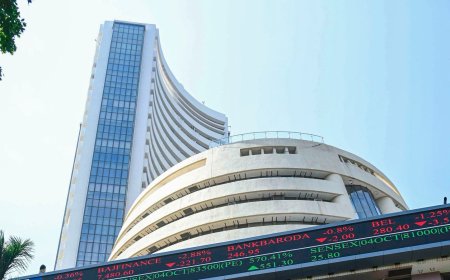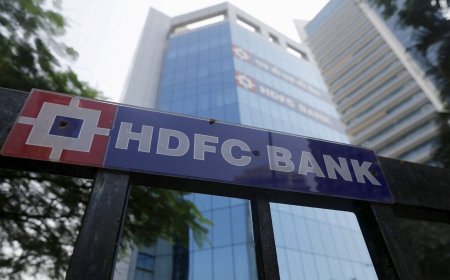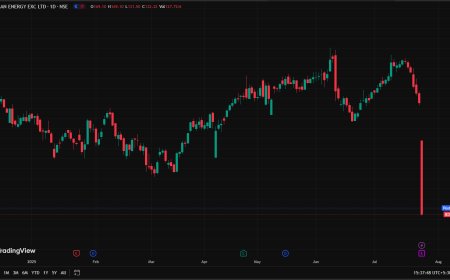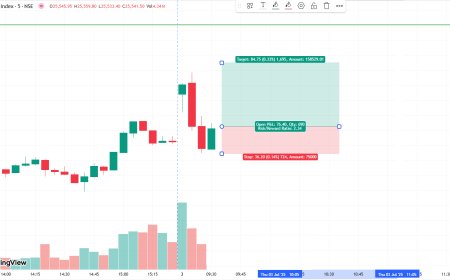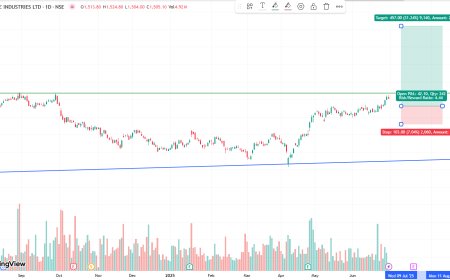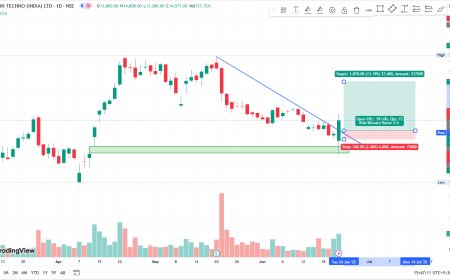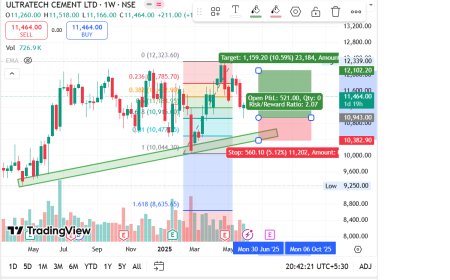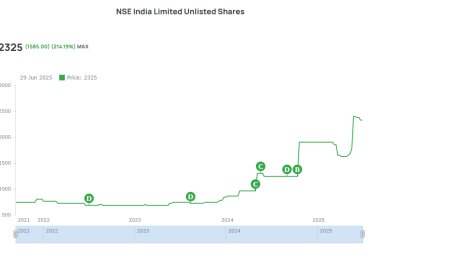RBI Balance Sheet Expands 8.2% to ₹76.25 Lakh Crore in FY25 on 33% Forex Reserves Surge
The Reserve Bank of India’s balance sheet rose 8.2% in FY25 to ₹76.25 lakh crore, led by a 33% boost in forex reserves. Analysts highlight this as a sign of economic resilience and strong investor confidence.

RBI’s Balance Sheet Swells 8.2% to ₹76.25 Lakh Crore in FY25 Driven by 33% Forex Reserves Boost
Mumbai, May 29, 2025 — The Reserve Bank of India (RBI) reported a significant expansion of its balance sheet in the fiscal year 2024-25, with a notable 8.2% increase, reaching a record ₹76.25 lakh crore. This growth was primarily propelled by a robust 33% surge in foreign exchange (forex) reserves, underscoring the central bank’s strong external sector position amid a complex global economic landscape.
Substantial Growth in RBI’s Balance Sheet Amid Global Economic Flux
The RBI’s balance sheet, a crucial indicator of monetary policy and financial stability, expanded considerably in FY25. The total assets, which include government securities, forex reserves, and loans to banks, rose from ₹70.46 lakh crore in FY24 to ₹76.25 lakh crore.
The standout driver of this expansion was the foreign currency assets segment, which saw a 33% rise to ₹13.15 lakh crore. This increase reflects both valuation gains due to currency appreciation and fresh accumulation of reserves amid volatile global markets and a cautious stance by the central bank to safeguard the rupee and manage liquidity.
“Foreign exchange reserves are a buffer that strengthens India’s ability to withstand external shocks. The RBI’s strategic accumulation this fiscal year demonstrates resilience and proactive risk management,” .
Forex Reserves: A Pillar of Strength for India’s Monetary Stability
India’s forex reserves act as a safeguard against currency volatility and capital flight. The 33% increase in forex assets in FY25 came in a period marked by global inflationary pressures, tightening monetary policies by major central banks, and geopolitical uncertainties.
Analysts point out that the RBI’s accumulation of forex reserves is a tactical move to defend the rupee from speculative attacks and to maintain investor confidence.
The growth in forex reserves was complemented by prudent asset management. The RBI maintained a balanced portfolio of government securities and foreign currency instruments, ensuring liquidity and yield optimization.
Market Context: RBI’s Balance Sheet in an Era of Monetary Tightening
The fiscal year 2024-25 was marked by a tightening monetary environment globally. The US Federal Reserve and the European Central Bank implemented multiple rate hikes to combat inflation, impacting emerging markets’ capital flows. In this context, the RBI’s ability to increase its balance sheet size and forex reserves signifies a well-calibrated monetary stance.
Despite these challenges, India’s domestic liquidity conditions remained accommodative, supported by RBI’s open market operations and liquidity infusion through various tools. The central bank’s commitment to managing inflation within the target band and supporting growth was evident in its policies.
Analyst Views: Balancing Growth with Stability
Experts have praised the RBI’s approach as a balanced act of nurturing economic growth while maintaining financial stability.
“An 8.2% expansion of the balance sheet amid a challenging external environment is commendable. It reflects RBI’s dual mandate — controlling inflation and supporting economic growth — being effectively pursued,”
Added that the forex reserves surge reflects strong capital inflows and foreign investment sentiment in India’s economy, backed by robust fundamentals and structural reforms.
Investor Outlook: Confidence Amid Robust RBI Position
For investors, the RBI’s growing balance sheet and bolstered forex reserves send positive signals. It implies a stable currency, manageable inflationary pressures, and a central bank ready to intervene if needed.
“From an investor standpoint, a strong RBI balance sheet translates to lower sovereign risk and enhanced market confidence. Foreign portfolio investors see this as a signal of economic resilience,” stated Prasad Bhave.
The current scenario is likely to encourage further foreign direct investment and foreign portfolio inflows, supporting India’s growth trajectory and capital markets.
Looking Ahead: RBI’s Strategic Priorities
Going forward, RBI’s key priorities will include carefully managing inflation amid global uncertainties, supporting banking sector health, and ensuring sufficient liquidity for economic recovery.
While the balance sheet expansion provides more room for maneuver, RBI will also have to navigate global rate cycles and geopolitical risks that can impact capital flows and currency stability.
The central bank’s cautious yet proactive stance in FY25 sets a strong precedent for the coming years as India aims to sustain high growth, manage inflation, and deepen financial markets.
Summary
In FY25, RBI’s balance sheet grew by 8.2% to ₹76.25 lakh crore, driven by a 33% increase in forex reserves to ₹13.15 lakh crore. This reflects a strong external position amidst global economic challenges, supporting currency stability and investor confidence. Analysts commend RBI’s balanced monetary policy in navigating inflation and growth objectives, with investors viewing this as a positive sign for India’s financial markets.
What's Your Reaction?
 Like
0
Like
0
 Dislike
0
Dislike
0
 Love
0
Love
0
 Funny
0
Funny
0
 Angry
0
Angry
0
 Sad
0
Sad
0
 Wow
0
Wow
0




